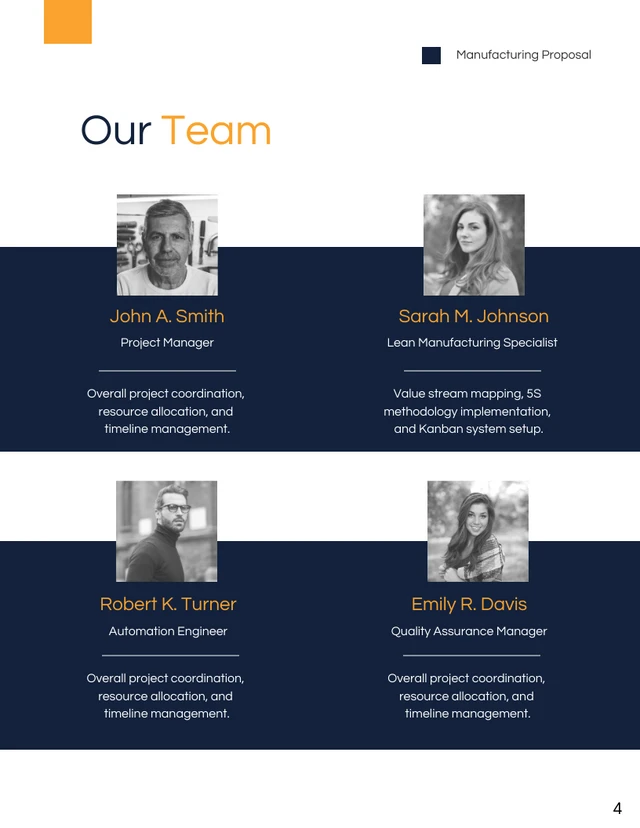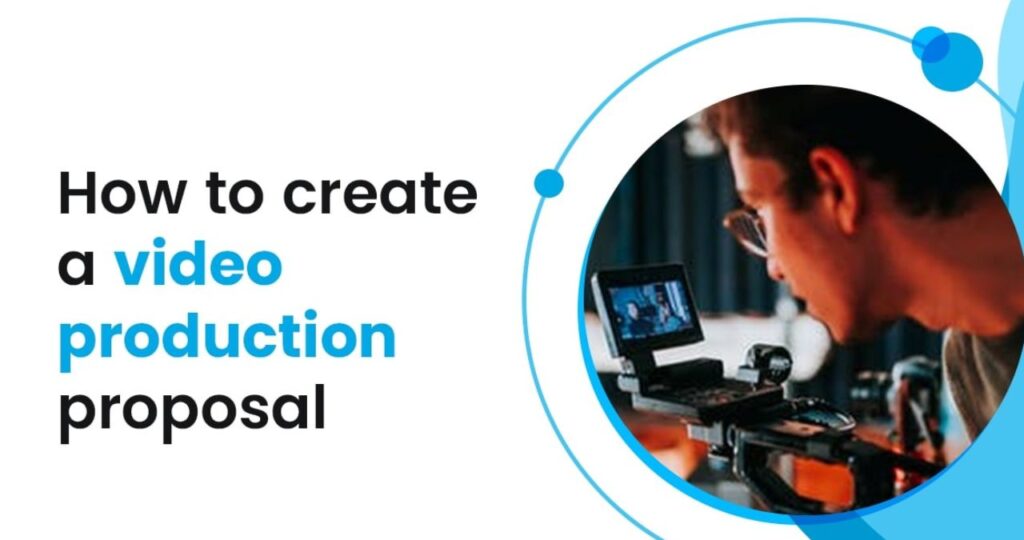How to Write a Product Proposal That Converts?
NOV 27, 2024 | LAST UPDATED ON NOV 27, 2024 BY ANGELICA NAIDU

You have a breakthrough idea for a product that can create waves, benefit millions of people, and have a significant impact. Or you want to improve an existing product. Either way, there might be a few missing pieces in the puzzle—resources, money, or both.
So, how do you get those missing pieces?
The answer is—product proposals.
With them, ideators can approach stakeholders or investors and convince them to invest or provide essential resources to turn their ideas into reality or improve their products.
Read on to learn how to write a killer product proposal, why most proposals fail, and some common mistakes overlooked while designing one with this blog.
So, let’s begin.
Table of Contents
ToggleWhat is a Product Proposal?
A product proposal is a formal document or presentation that outlines a new product idea, improvement, or offering to potential stakeholders.
It is persuasive and convinces a stakeholder, client, or investor to invest in your initiative.
This involves mentioning:
- Your inspiration behind the product
- A rough idea of your product
- How it will enhance your users lives
- Your gameplan to bring it to life
- What market gap are you addressing?
- What features does the competition not offering currently, and your product does?
Why do Most Product Proposals Fail?
A report by Loopio suggests that organizations open and respond to 65% of the proposals they receive on average.
Prospects receive tons of proposals, so they need to make prompt decisions. They are unable to make time to go through a single proposal thoroughly.
A vast majority of product proposals are generic and have nothing unique about them. This is why they easily get rejected.
And this is why your proposal needs to stand out.
That being said, let’s look at the essential components of a winning product proposal.
What Should be Included in a Product Proposal?
Typically, a winning proposal communicates the value proposition of the given product and how it stands out among the rest.
It highlights the revenue potential and the demand this product will create, plus the team’s effort behind making it a reality.
Here are the key elements you should include in your killer product proposal:
Executive Summary
An executive summary is the first and foremost page in a proposal that your audience (in this case, the stakeholders or investors) will read. It puts your idea concisely and concretely for readers to digest quickly. It will have all the essential points of the proposal.
62% of investors say they will stop reading if the executive summary does not pique their interest.
We highly recommend you write this page once you finish the document. By then, you will have absorbed the content thoroughly. You will know what to include (and what not to).
Here’s an example of a concise executive summary:
Alpha Health is a 10-year-old unicorn revolutionizing the health industry by making health accessible for all age groups. We have a board of renowned health experts and software solutions that help customers reach peak health in the comfort of their homes.
With a particular emphasis on whole foods, plant-based (WFPB) lifestyle, our newest release, HealthTrack, is a timeless mobile app. We have integrated fitness plans, nutrition guidance, social media-centric features, and medical history—all in one place.
With this initiative, we aim to serve health-conscious individuals, busy professionals, and parents who can enjoy these features on the go without compromising their valuable time.Alpha Health has proposed a plan for HealthTrack’s concept development worth $200,000 for 24 months.
Problem and Solution
A problem and solution statement helps the reader comprehensively understand the specific problem your idea is addressing and how the latter solves that problem.
Keep in mind that your solution might not be unique, and that’s okay.
You can offset this by demonstrating strong research, drive, and capability to solve the problem, and convey the same in this section to convince the investor.
This is what a problem and solution statement should look like:
Problem Statement
People are confused about maintaining health and well-being. There’s a lot of misinformation going on around diet and lifestyle practices. Hence, they struggle to find reliable sources and guidance.
The Solution
HealthTrack offers legitimate knowledge and personalized guidance for peak health and nutrition. Everything that a concerned customer would look for is available on our platform.
Our inexpensive pricing plans and a 30-day free trial will motivate users to take action and experience contentment at mind, body, and soul levels.
This app will be launched for both Android and iOS.
Product Features
This section will discuss your product’s current or future functionality, design elements, and use cases. This is the most critical section of the proposal, as it essentially pinpoints what the product is about.
Highlight the areas in which your product will benefit the target audience.
Here’s a quick example for you to learn:
HealthTrack Features
- Understand your mind and body better with Health Monitoring
- Enjoy your best health with Personalized Fitness Plans
- Stay content 24×7 with Mental Health Support
Uplift yourself along with others through Community Engagement
Key Differentiators
This section aims to highlight how your product stands ahead of the competition.
Compare and jot down the factors that differentiate your product, such as accessibility, particular features, or cost.
Add a tip
This is important because there will be tons of players and/or one prominent leader in your category.
Here’s an example of how you can be creative with highlighting unique features:
Imagine getting all your health needs met in one place.
That’s HealthTrack for you!
On top of that, our plans are as cheap as a quality bottle of wine.
Product Demonstration
Now, it’s time to show your product in action.
Product demonstration aims to showcase your product’s experience and functionality in real life. When investors learn this, they will understand your product even better.
Depending on whether your product is physical or digital/software, you can either put up a physical or a pre-recorded demo, respectively.
Market Opportunity
With this page, you communicate to the investor about the product’s relevance in the market. If you research and work hard, your potential investor will understand how and why your product matters.
To achieve this:
- Research the market thoroughly, then calculate your product’s revenue, given it captures the whole market. This is known as Total Addressable Market (TAM).
- Then, make a template of supposedly the most lucrative companies for your business (Ideal Customer Profiles or ICPs) and make precise buyer personas.
All of this might be hard to put on paper, especially when your business is at its baby stage. However, an unwavering focus on your product will lead to the best solution.
Here’s an example of a market opportunity chart:
Customer Profile | Percentage (%) | Estimated Revenue ($m) |
Health-conscious individuals | 65% | 9 |
Busy professionals | 25% | 4 |
Gen Z individuals | 10% | 1.5 |
Financial Projections
The objective is to show confidence and faith in your vision.
A general thumb of rule with prospective investors is that they live by a give-and-take dynamic. They will not invest in products or ideas that can’t drive profits.
So, how are you going to convince them?
Calculate and include metrics of the investment and the return on investment (ROI) within a specific timeframe—quarters, months, or even years.
Do this, and win your prospect’s trust!Note: You can add a testimonial about the value of your product. This will add more weight to your projections.
Product Pricing
Your product’s pricing model is crucial—it showcases your market understanding, value delivery, and revenue potential, directly impacting investor interest.
A wise pricing decision involves:
- Deciding the number of pricing plans, depending on the product type
- Deciding between one-time or subscription-based pricing
- Comparison with competitors/alternatives’ pricing
- Last but definitely not least, doing extensive market research
The above will help you and your investor understand your product’s value proposition.
Also, an optimal pricing strategy affects your product’s market positioning and revenue. An excellent point to note is that pricing can even decide your brand’s image in the long term.
Here’s what a well-researched pricing strategy looks like:
Basic ($15/month) | Standard ($30/month; best value) | Premium ($40/month) |
|
|
|
Development Timeline
You need to be transparent about its launch date and the milestones at which you would use the funding.
For a product in its developmental stage, include a streamlined and tentative timeline that displays milestones and their durations.
Here’s an example:
Stage | Duration |
Research and Planning | 1–2 months |
Prototype Development and Initial Testing | 3–4 months |
Feature Expansion and Beta Testing | 2–3 months |
Pre-Launch and Marketing Preparation | 1–2 months |
Official Launch | 1 month |
Post-Launch Support and Updates | Ongoing |
Long-Term Growth and Expansion | 6–12 months |
TOTAL | 14–24 months |
Project Team and Investors
This page will comprise your core team members who have or will be working on your vision. This will be an additional element to strengthen your product’s credibility and gain your investor’s trust.
That being said, your investor would be curious to know about them, so make sure to include relevant details like their impressive qualifications, portfolios, and professional rapport. If you have any other reputed investors or partners under your belt, make sure to include them.

Source. Venngage
Here is a descriptive example:
The Team
At HealthTrack, we believe that a successful health and wellness app requires not only cutting-edge technology but also a team that is passionate about innovation, user-centric design, and delivering tangible benefits to users. Our team comprises experienced professionals from diverse backgrounds, all committed to helping individuals lead healthier, more balanced lives.
Key Team Members
Sylvie Gonzalez – Founder & CEO
With a deep passion for health and technology, Sylvie brings 15 years of experience in the tech and wellness industries. Having previously worked at Healthzest, she founded Alpha Health to bridge the gap between fitness, mental well-being, and technology. Sylvie is focused on building a company culture that values innovation, user-centric solutions, and long-term sustainability.
Leila Renee Carter – Chief Technology Officer
Leila leads the technical development of the HealthTrack app. With expertise in mobile app development, AI integration, and data security, she ensures that the app’s architecture is scalable, secure, and aligned with the latest technological trends. Leila has a background in software ideation from Mindify, where she developed complex solutions in health tech.
Samuel Clark – Product Manager
Samuel oversees the overall product development lifecycle, from concept to execution. He collaborates with cross-functional teams to ensure that the HealthTrack app meets the needs of its users, aligning business goals with user-centered design. With a background in full-stack development, he brings 7 years of experience in leading product development in the digital health space.
Samarth Sharma – Lead UX/UI Designer
Samarth is responsible for the visual design and user experience of the HealthTrack app. With expertise in creating intuitive and engaging interfaces, he ensures that users have a seamless, enjoyable experience while navigating through fitness, nutrition, and mental health features. Samarth has worked at Healthzest, contributing to building user-friendly digital products.
Alice Sweeney – Head of Marketing
Alice leads the marketing strategy and branding for Alpha Health, focusing on building a strong user base and increasing engagement. With experience in digital marketing, social media strategy, and brand development, she has successfully launched campaigns for Reboot Health. Alice is focused on driving customer acquisition, building partnerships, and enhancing brand visibility in the health and wellness space.
Nathaniel Turner – Head of Data & Analytics
Nathaniel is responsible for overseeing data collection, user behavior analytics, and AI-powered insights. With a background in data science and machine learning, he works to refine personalized health recommendations and predictive analytics that drive the app’s core functionality. Nathaniel brings 8 years of experience in health tech analytics and has worked with BlissTech to build actionable data strategies.
Advisors
William Cooper – Health & Wellness Expert
William is a recognized health and wellness industry authority, with years of experience working with fitness programs, wellness strategies, and holistic health. He brings valuable insights into integrating mental health and physical well-being in the app.
Zariah Williams – Technology Advisor
With a background in scaling technology platforms and working with healthcare startups, Zariah provides strategic guidance on scaling the HealthTrack platform while ensuring data security, privacy, and compliance with health regulations.
Our Philosophy
A shared passion unites the HealthTrack team for using technology to improve lives. By combining our diverse skill sets in health, technology, design, and business, we are committed to building a product that is not only innovative but also practical and user-friendly. Together, we strive to provide a platform that helps users live healthier, more balanced lives—one step at a time.
Contact and Next Steps
It’s time for the final takeoff.
You will now walk your client through the necessary steps to contact you. Provide a clear call-to-action with interactive buttons for your socials, business email, or phone number.
Optional: If your office has a physical location, embed a Google Maps link so they can meet you in person.
How to Write a Product Proposal
Writing a winning product proposal is a result of implementing a multitude of factors.
So let’s look at them, one by one:
Adjust your Proposal for each Stakeholder/Investor
Different stakeholders look for different parameters when making an investment. Hence, it is important to address the factors that each audience type is looking for.
To avoid the hassle of customizing for each stakeholder and creating hundreds of different proposals, you can ensure you’re speaking to the widest possible spread of stakeholders.
Here’s how your messaging can resonate with each audience:
- Sales: Mention how your product can solve customer problems, improve sales metrics, or address market demands.
- Marketing: Considering a marketer’s perspective, highlight how the product will enhance brand reputation, attract new customers, or increase market share.
- Technical leaders: Some technical merits to highlight could be the product’s innovation factor, technical feasibility, and integration with existing systems.
Executives: For them, it all boils down to the product’s profitability. So, talk about the overall return on investment (ROI), potential for market expansion, and strategic alignment with business goals.
Read more:
How to write persuasive proposal title?
How to Start a Business Proposal Introduction?
Increase your Proposal’s Impact with Visuals and Data
Captivating visuals can portray complex information concisely, making it easier for the reader to understand.
You can build a strong foundation of your product’s benefits and feasibility by:
- Adding substance to your plans by incorporating real-world examples, customer testimonials, and market analysis of your product.
- Create impactful mockups, graphs, or charts with tools like PowerPoint and Figma.
Define your Product’s Unique Value
A stand-out product helps put your product in an untouchable position in the market.
So, while writing your proposal, focus on how your product fulfills a need or solves a problem better relative to its competition.
Use Persuasive Language: Customise your Language for Clarity and Impact
Keeping your messaging to the point helps the readers as it cuts down on time and energy.
Now, here are some tips to make your language more effective:
- Statistics: Use real-life statistics and an urgent undertone to make your approach more persuasive. For example, you can say, “Save 2 hours of meeting a doctor with HealthTrack.”
- Simplicity in Language: Follow the 3 C’s—clear, captivating, and concise. Avoid technical jargon unless it’s required to explain necessary information.
- Professional Tone: Maintain a professional tone to communicate your seriousness and professional etiquette to a potential investor.
- Active Voice: This helps in making your message sound direct and engaging.
- Use Bullet Points, Headings, and Bold Text: These elements help bring the reader’s attention to key elements of your proposal—just like I did with this section!
In essence, the average undertone decides whether the audience will be able to understand your message or not.
Provide Concrete Data and Research
Solid pieces of data and researched information help strengthen your product’s potential demand. You can incorporate market research, user testimonials, and case studies to achieve this.
Address Potential Concerns: Adapt your Metrics to Match your Stakeholders’ Interests
Addressing potential concerns and tackling them directly demonstrates your ability to predict future possibilities.
As an example, one can use AI technology to eliminate human interactions wherever appropriate.
Another important aspect to consider is to include metrics based on the audience type. If you want to convince different audiences, you need to tailor these statistics to their profession.
- Sales and Marketing individuals: Add data like customer satisfaction scores, expected market penetration rates, and customer acquisition costs.
- Technical leaders: Mention performance metrics like adherence to security standards, integration capacity, scalability, and system performance.
Business executives: For potential investors, you should naturally mention financial metrics like ROI, break-even points, projected revenue growth, and potential cost savings.
End With a Memorable Conclusion
Providing a smooth transition to try out your product would make things easier for your audience.
So, to begin with, make your summary’s pitch persuasive by incorporating a catchy message, such as “Elevate your health by arranging a demo with us.”
Also, having something as simple as an “Accept” button as a CTA can reduce friction and shorten the sales cycle.
Different Kinds of Product Proposals and How to Write Them
A brand owner can have different takes on their product strategy:
- Launch a new product to expand their customer base
- Make modifications to existing products to comply with the latest trends and stay in the competition
- Launch an existing product in a new market to encash a proven formula
Let’s see how you can customize your product proposal for each case.
Launching a New Product
Sincere customers would have shed light on the shortcomings of your existing products. A good way to address them can be by starting afresh and launching a new product.
With this in mind, make sure to include the following in your proposal:
- Why are you launching this product? Do you see a clear-cut opportunity in the market? Can you explore a new market? Or are you concerned about your current customers complaining about existing products? Jot the reason down.
- The element(s) or feature(s) that make your product unique
- Your plans of action regarding its revenue
Improving a New Product
If you improve a new product, its price will likely increase. However, you can justify that hike with better efficiency, user experience, and quality that comes with these improvements.
Here’s what you can include in your proposal to convince your audience:
- How the changes justify past customer complaints
- A cost-to-benefit ratio that highlights how this newer launch is economically better than its predecessor
- Actual proof of improvement in the form of feedback/testimonials from loyal customers
- How these changes have or will impact revenue, customer loyalty, and experience
Entering a New Market with an Existing Product
This is a common strategy amongst some smartphone manufacturers running sister companies. They would launch a smartphone under one sister company, then relaunch it under another company as a downgrade at a cheaper price tag.
This way, the same smartphone can find different positions in different markets.
Include the following details to strengthen your proposal:
- The demand your product can create in the new market
- Why do you want to re-release this product in a new market? Back this up with the following:
- Data such as expectations of the new market’s audience regarding price, features, etc., should be included.
- Jot down expected revenues and profitability
- Areas of investment, such as R&D, marketing, and more.
Common Mistakes to Avoid in a Product Proposal
It’s obvious that you need to convince the reader to invest. But your proposal will fail if you commit some mistakes.
Here are a few of them:
Adding Too Much Information
This will result in unnecessary fluff, deviating the reader from the main points.
As mentioned before, only include relevant information about your product. Also, keep the messaging clear and concise.
Ignoring the Competition
If you ignore your competitors, you will not have a reference point.
Hence, you won’t be able to compare and claim that your product is better.
Neglecting the Budget
Not addressing the budget will confuse the investor. They would not know the investment amount and the potential return. And if they don’t see any returns, they will naturally avoid investing in your product.
Hence, paint a picture of your product’s financial future with projections like ROI calculations, cost breakdowns, and revenue forecasts. The investor then will have an idea about possible profits and losses.
Take care of the above, show an ROI, and seal the deal!
The takeaways
Crafting an impressionable product proposal involves a certain level of thinking, strategy, and comprehension of what a typical investor needs to know.
Turning your proposal into an easy-to-read piece for the reader will take practice and putting yourself into the reader’s shoes.
But don’t give up; we firmly believe you will nail an attractive deal once you get there.
Good luck with your new endeavor!
Conclusion
If you want to understand proposal templates, this guide can help you build one that closes deals. Here, we have elaborated on what to do and what not to do to impress your client. Creating proposals is time-consuming and requires a lot of time and effort. But with super proposal pre-designed business proposal templates, all you have to do is research, and our proposal templates are ready for you to use. With our 100% customizable templates, you’ll close those deals faster than light.
Additional Resources:
1. How to write a freelance proposal?
2. Project Proposal Examples
The best way to end a proposal for your idea is to have a CTA button, like “Accept” or “I’m in.”
A product proposal roughly comprises the following elements in order:
- Title Page
- Executive Summary
- Problem and Solution Statement
- Product/Software Features
- Unique Aspects/Why Choose Us?
- Product/Software Demo
- Market Opportunity
- Financial Projections
- Pricing Table
- Development Timeline
- The Team + Investors (if any)
- Letter of Acceptance
Feature proposals, as the name suggests, focus more on the “features” of an existing product without necessarily going into detail.
On the other hand, product proposals need to cover the A to Z of a new or existing product. They inherently come with a higher risk of rejection. Hence, you’d need to explain the product’s intricacies in detail.
Increase your close rates today!
Secure every pitch that you make with Super Proposal. Craft winning proposals, share and track them on a single, comprehensive platform.
✓ 15-Day Trial. No Credit Card Required.

Recent Post



